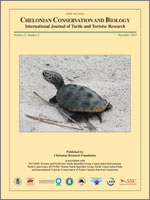The Archie Carr National Wildlife Refuge (ACNWR), located along the central east coast of Florida (USA) in the western North Atlantic, hosts one of the largest loggerhead (Caretta caretta) nesting assemblages in the western Hemisphere. Sea turtle nesting activity has been continuously monitored on this beach for > 31 yrs, representing one of the longest sea turtle reproductive data sets in the world. Between 1982 and 2012, an estimated 358,243 nests were deposited on the ACNWR with an estimated annual mean plus 95% confidence interval of 11,556 ± 1,129 nests. This constitutes 25.4% ± 0.8% of the mean annual Florida Index Nesting Beach Survey loggerhead complement. Mean annual clutch size was 113.9 ± 1.4, resulting in a 55.1% ± 4.0% mean annual hatching success rate and a mean emerging success rate of 53.3% ± 3.7%. The only egg-fate that was statistically correlated with emerging success were eggs washed out by erosion. The loss of eggs by erosion was significantly greater during storm and poststorm years, compared with nonstorm years. Among individual first-time nesting females that were measured, mean straight carapace length was 91.2 ± 0.15 cm and mean curved carapace length was 98.2 ± 0.15 cm. These data suggest that the ACNWR supports the greatest loggerhead nest density per kilometer in Florida, underscoring the importance of the ACNWR as one of the most important nesting habitats for loggerhead turtles in the Western Hemisphere.
How to translate text using browser tools
1 December 2014
Long-Term Trends in Loggerhead (Caretta caretta) Nesting and Reproductive Success at an Important Western Atlantic Rookery
Llewellyn Ehrhart,
William Redfoot,
Dean Bagley,
Katherine Mansfield
armoring
erosion
interseason recaptures
long-term study
Morphometrics
nesting
Reptilia





